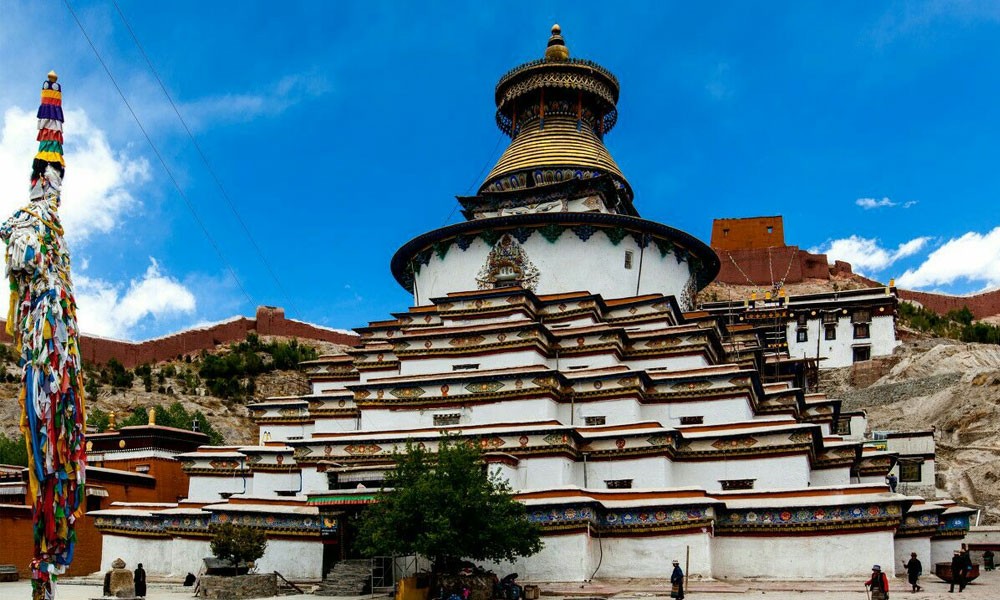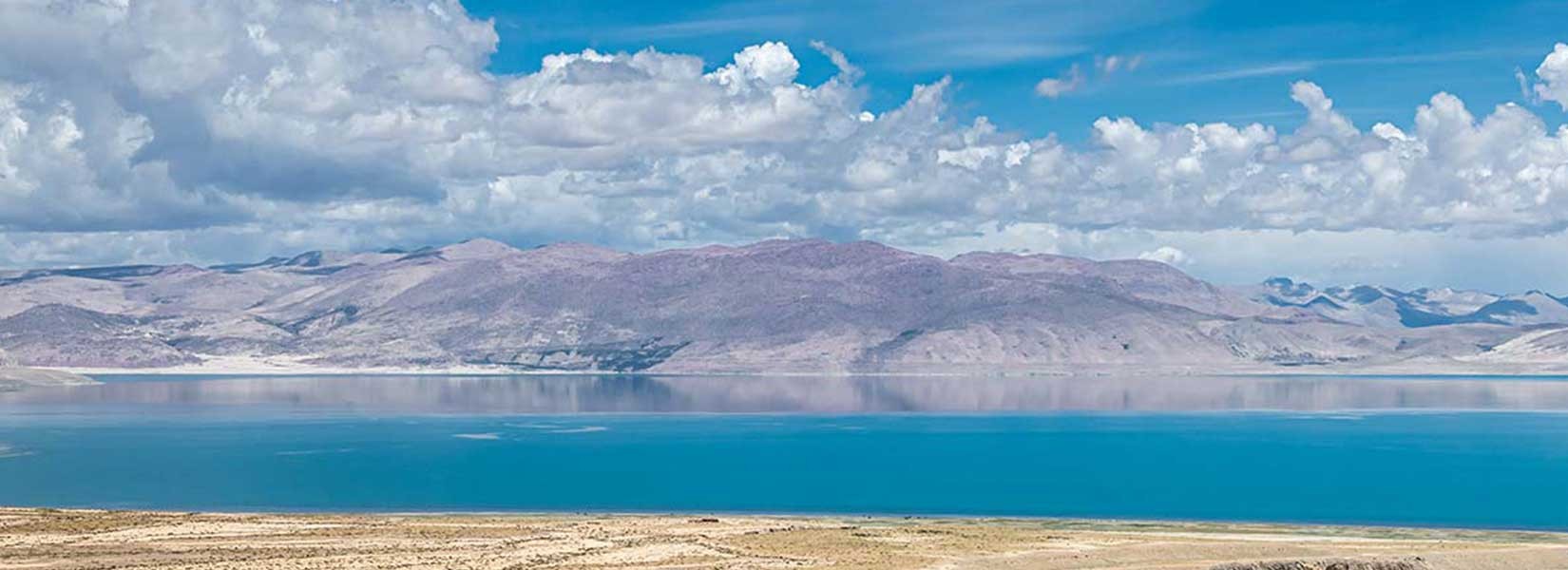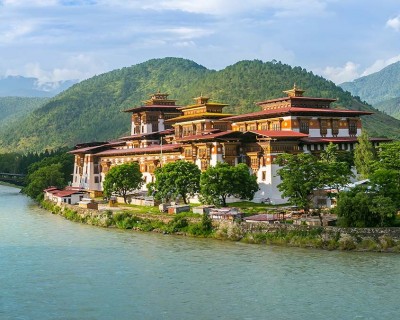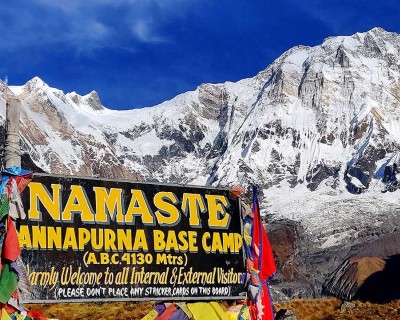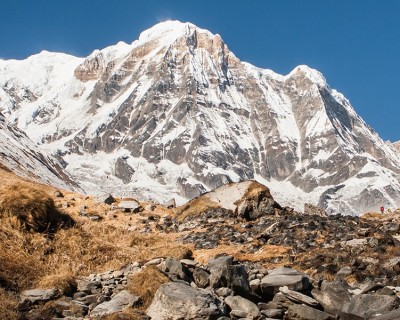Why Travel to Tibet From Nepal?
Convenient Access: Flights and Overland Routes
Nepal is the only country in the world with direct access to Lhasa, the capital of Tibet. The direct flights operate between Kathmandu and Lhasa, the flight will take approximately 1 hour and 30 minutes. This is the quickest way to reach Tibet. If you prefer a scenic journey, the overland route from Kathmandu to Lhasa is another popular choice. The drive passes through the Rasuwagahdi-Kerung border. Additionally, the direct route from Nepal also allows for direct visa processing. This makes travel arrangements smoother than traveling from other points across the world.
Strong Spiritual and Cultural Connection
Both Nepal and Tibet share deep historical ties. Your journey will be more meaningful if you start your Tibetan journey from here. Nepal is home to Lord Buddha, a palace where he was born. Tibet is home to the most revered Buddhist and Hindu sites like Jokhang Temple, Potala Palace and Mount Kailash. It is common practice for the pilgrims of both nations to traverse across borders to explore the sacred religious sites. Moreover, for centuries, Nepal and Tibet have shared trade and cultural exchange. The architectural styles, religious practices and art forms of both regions strongly influence each other.
Spectacular Himalayan Landscapes and Unique Geography
Traveling from Nepal to Tibet combines the most scenic landscape in the world. The route presents a mix of lush valleys of Nepal and dramatic transitions to the high-altitude plateau of Tibet. The views of the Himalayas are also exceptional throughout the way. The North Face of Mount Everest from the Tibetan side will also add a unique and unseen perspective. Tibet, which is considered the ‘Roof of the World’ has vast high-altitude deserts, stunning lakes and towering mountains. This combination of landscape and mountain views of both countries creates a surreal travel experience.
Visa and Travel Permit Simplifications
The visa and travel permit simplification while traveling from Nepal is one of the biggest advantages of this choice. It is a much easier experience compared to entering Tibet from other countries and even mainland China. Travelers entering into Tibet via Nepal can obtain a Tibet Group visa directly in Kathmandu. Convenience is assured through this process, making the entire journey smooth. The travel agency does all the paperwork regarding the permits, meanwhile you travel throughout Nepal before heading into Tibet.
Nepal, Ideal Destination for Multi-Country Travel
Nepal is a great base for exploring multiple Himalayan regions. From here, it will be easy to travel to Tibet, Bhutan and India. There are also combination packages that explore multiple nations with a single itinerary. The most popular among them is the Tibet, Bhutan and Nepal tour. In a single trip, travelers will get to explore Kathmandu’s cultural heritage, serene monasteries in Bhutan and Lhasa’s Tibetan wonders. Most often, after completing tours and treks in Nepal, travelers proceed toward Bhutan and Tibet.
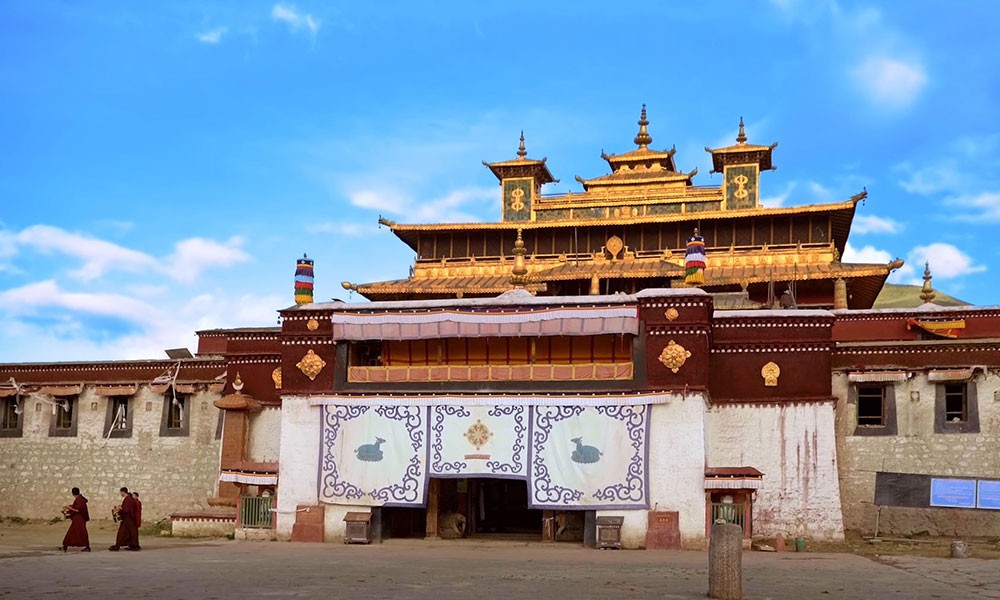
Top Tibet Tour Packages From Nepal
Nepal and Tibet travel together, but they have a completely different kind of attractions. Both of these nations have been the most sought-after destinations in the world from a cultural, spiritual, and striking view adventurer. There are a variety of tour packages with unique features and timeframes targeting each specific experience in Tibet. Below are some of the best Tibet you package from Nepal:
Lhasa City Tibet Tour: 03 Nights 04 Days
For travelers who are looking to experience the heart of Tibetan culture and spirituality the 4-day Lhasa City Tibet Tour is a perfect choice. This short yet immersive journey will take you through the capital of Tibet, Lhasa. This beautiful, intriguing capital is known for its stunning monasteries, sacred temples and bustling marketplaces. So, in a short span, you will explore the best of what Tibet has to offer. This tour plan is most ideal for first-time visitors to Tibet, cultural and spiritual travelers, and those with limited time on hand but want to explore Lhasa’s highlights. Here is the overall outline of this tour plan:
Lhasa City Tibet Tour: 03 Nights 04 Days Outline Itinerary
Day 01: Kathmandu (1,400m/ 4,593ft) to Lhasa (3,650m/ 11,975ft) flight
Day 02/03: Two full days sightseeing tour in Lhasa
Day 04: Flight back from Lhasa to Kathmandu (1,400m/ 4,593ft)
This is a spiritual pilgrimage tour that combines Tibet’s cultural wonders with the sacred Mount Kailash and Lake Mansarovar. Mt. Kailash Tour visa Lhasa begins from the capital of Tibet after departure from Nepal. First, you will explore the historic palaces and monasteries in Lhasa. Then, you will head toward Mt. Kailash on the sacred route. This is the most revered peak in Hinduism, Buddhism, Bon and Jainism. Thousands of travelers visit this sacred site every year. The tour to Mt. Kailash is suitable for pilgrims and spiritual seekers. This journey also provides an exciting experience for adventure travelers, as the path traverses harsh high-altitude terrain. Travelers will also get to marvel at the remote nature of the Tibetan Plateaus.
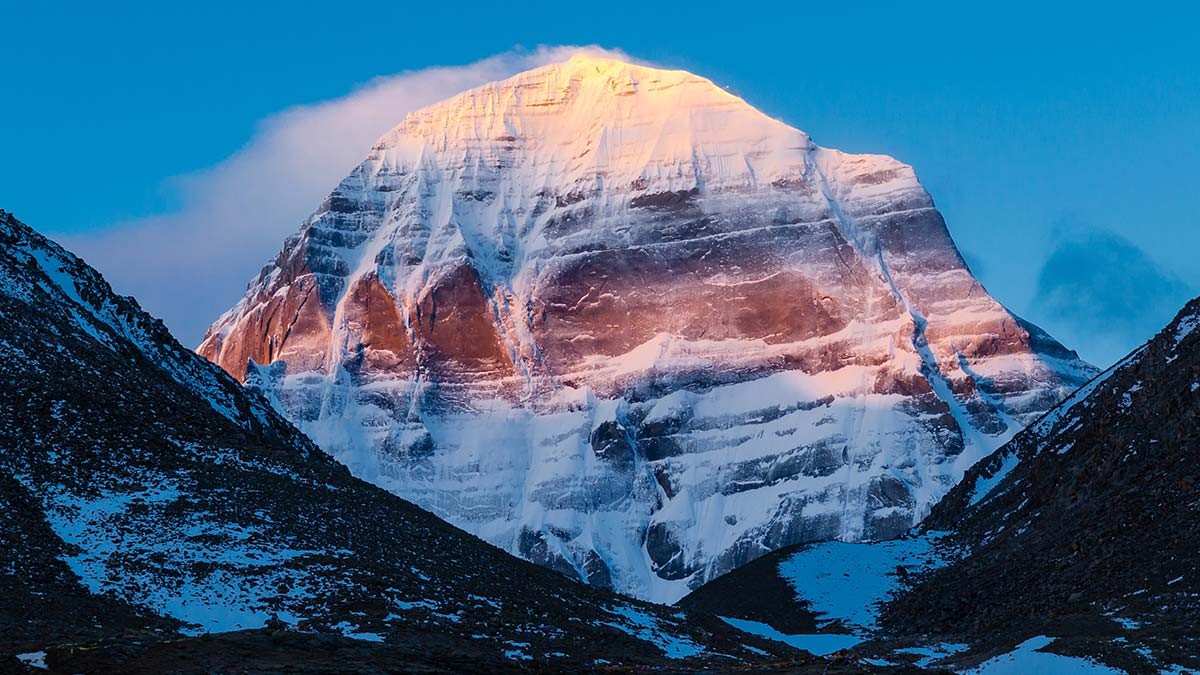
Mt. Kailash Tour Via Lhasa: 11 Days Outline Itineray
Day 01: Arrival in Lhasa (3,650m/ 11,975ft)
Day 02: A full day of sightseeing in Lhasa
Day 03: Drive from Lhasa to Shigatse (3,860m/ 12,6664ft)
Day 04: Driving from Shigatse to Saga (4,640m/ 15,223ft)
Day 05: Saga to Lake Mansarovar (4,590m/ 15,059ft) drive
Day 06: Lake Mansarovar to Darchen (4,600m/ 15,091ft)
Day 07: Darchen to Derapuk (4,750m/ 15,583ft)
Day 08: Derakuk to Dolmala (5,620m/ 18,438ft) to Zutulpuk (4,790m/ 15,715ft)
Day 09: Zutulpuk to Darchen to Saga (4,640m/ 15,223ft)
Day 10: Drive from Saga to Kyirung (2,700m/ 8,858ft)
Day 11: Kerong to Kathmandu (1,400m/ 4,593ft)
This overland tour takes travelers directly to Mount Kailash and Lake Mansarovar from Nepal. There is no flight necessary for this tour and exploring the scenic landscape of both countries is a wonderful experience. This tour passes across the rugged terrain of the Tibetan Plateau, dramatic mountain passes, remote villages, ancient monasteries and high-altitude deserts. Unlike the direct flight route, the overland route allows travelers to adapt gradually to the high-altitude atmosphere. This overland tour will be an experience that will connect you to the raw power of nature and deep spiritual essence. So, if you are seeking adventure and spirituality, the Overland to Mt. Kailash and Lake Mansarovar will be the most transformative journey you will ever undertake.
Overland to Mt. Kailash and Lake Mansarovar: 10 Days Outline Itineray
Day 01: Drive from Kathmandu (1,400m/ 4,593ft) to Kyirung (2,700m/ 8,858ft
Day 02: Rest and acclimatization day at Kyirung
Day 03: Drive from Kyirung to Saga (4,640m/ 15,223ft)
Day 04: Saga to Paryang (4,558m/ 14,954ft) to Lake Mansarovar (4,590m/ 15,059ft)
Day 05: Drive to Darchen(4,600m/ 15,091ft) from Lake Mansarovar
Day 06: Trek to Derapuk (4,750m/ 15,583ft)
Day 07: Derapuk to Zutulpuk (4,790m/ 15,715ft)
Day 08: End of Kailash Parikrama and drive to Saga (4,640m/ 15,223ft)
Day 09: Drive to Kyirung (2,700m/ 8,858ft
Day 10: Drive back to Kathmandu (1,400m/ 4,593ft)
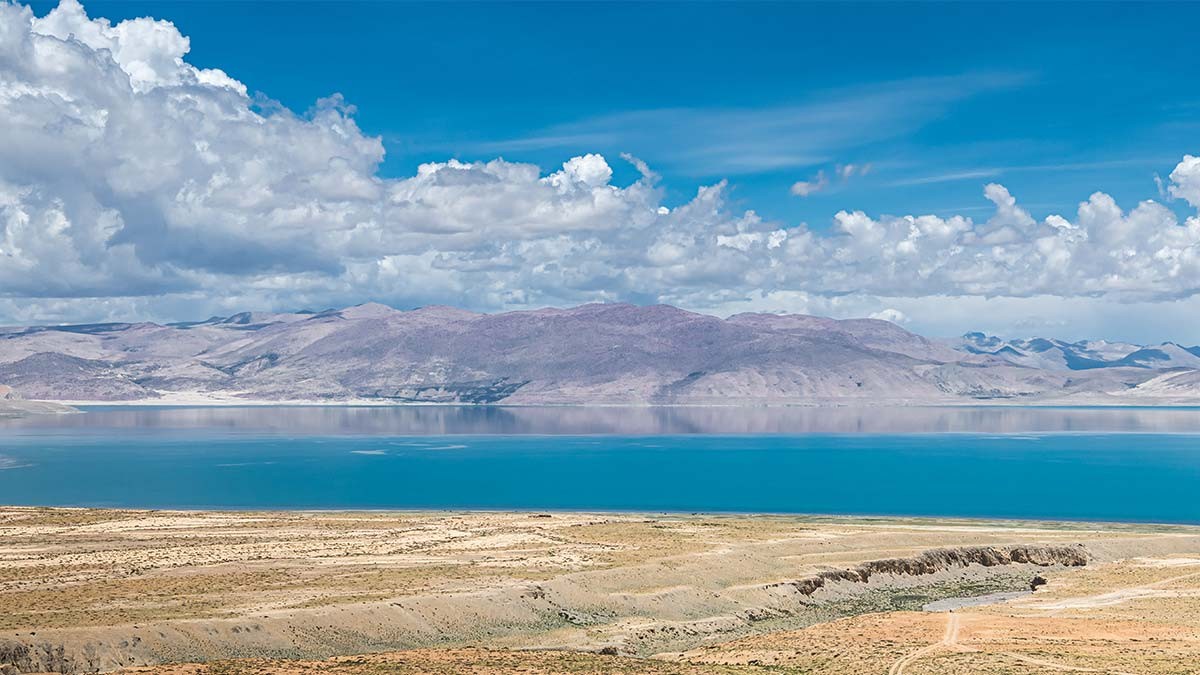
Best Time to Visit Tibet From Nepal
Tibet’s high-altitude climatic conditions make seasonal variation significant. It is important to choose the right time for the trip to make the experience enjoyable. Here is a detailed breakdown of the best season to travel from Nepal to Tibet.
Ideal Periods
Spring (March to May): This popular season is ideal for sightseeing and features mild weather. Travelers will be able to continue their journey under clear skies and pleasant weather. This will make the cultural tours, sightseeing and monastery visits even more exciting. In Lhasa and the surrounding regions, the temperatures are about 5°C to 20°C. The comfortable temperatures make acclimatization much easier. Tibetan New Year also often falls in the early part of the season. If you are lucky, you will get a chance to relish the unique cultural experience.
Autumn (September to October): Autumn is another widely popular season for traveling to Tibet from Nepal. Due to is stable weather, excellent visibility and comfortable temperatures this season remains a top choice song for travelers. The temperature of Tibet is generally around 5°C to 20°C at this point. Days are pleasant and nights are cool but not harsh. The skies in this season are crystal clear and provide unparalleled views of Everest, Kailash and other Himalayan ranges. With no monsoon downpours and winter snowstorms, the roads and flights are more reliable in autumn.
Off-Seasons
Unlike Nepal, which receives heavy rainfall during the monsoon season (June to August), Tibet remains relatively dry. The temperature in Tibet remains around 10°C and 25°C at this point. So, in the high-altitude region, the temperatures are comfortable. Monsoon is a good period to visit Tibet. But if you are taking the overland route, it can be challenging due to landslides in Nepal’s hilly regions. Visiting Tibet in winter (December to February) is also possible, but the climate is cold during this period.
During winter, temperatures can drop as low as -10°C at the central part of the Tibet. At higher altitudes, the temperatures can drop to -20°C or lower. Due to fewer tourists, the major attractions in Tibet are less crowded and you will get a more immersive experience. But due to snowfall at the higher altitudes, some high passes and remote areas may be inaccessible.
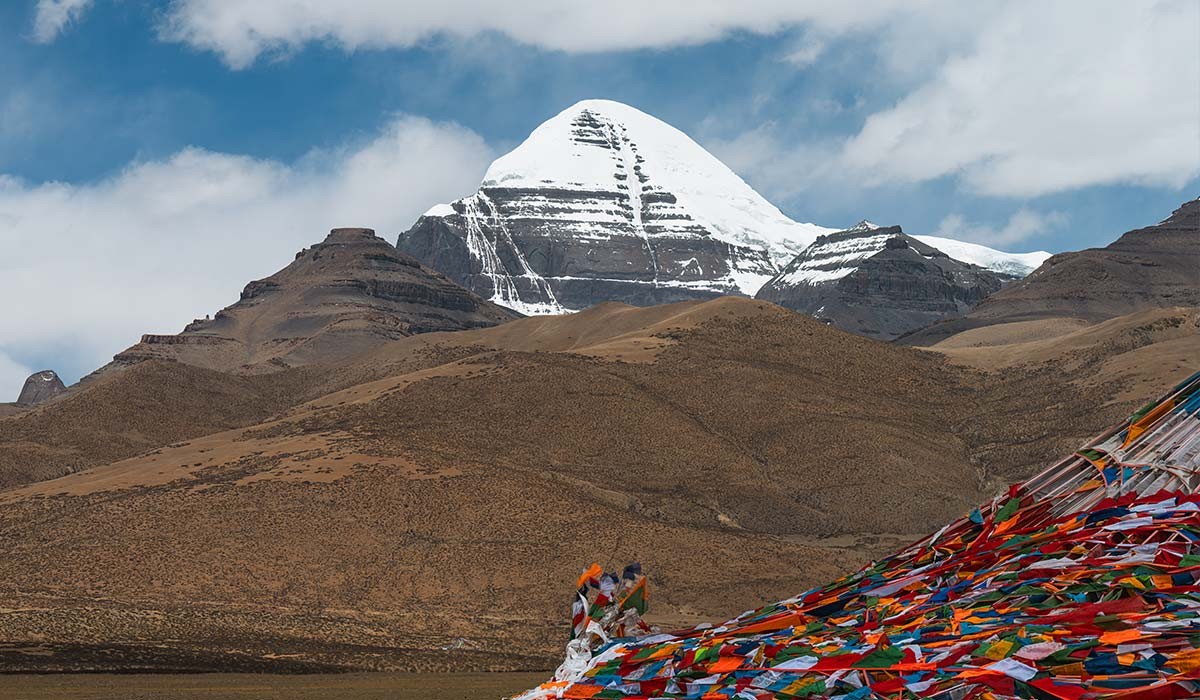
Travel Requirements and Permits
Tibet is a restricted region and independent travel is not allowed here. It is necessary for travelers to book through a registered agency to obtain necessary permits. Here a detailed breakdown of he required documents for this travel:
- Tibet Travel Permit (TTP): This permit is mandatory for all travelers
- Group Visa: Travelers entering from Nepal need to get a Tibet Group Visa
- Alien Travel Permit: If the tour plans include areas outside Lhasa, such as Mount Kailash, Shigatse, or EBC, this permit is essential
- Special Permit: Necessary for exploring the other remote areas, especially near the China-India border
To apply for these permits, documents such as an original valid passport and photographs (passport-sized) are essential. If you are doing this trek through an agency they will handle all of the process. The travel permit process takes around 15 to 20 days, depending on the itinerary route. So, it is best to plan ahead and secure the necessary permit. Your tour operator will handle most of the paperwork. But, it is also important for you to be aware of the requirements.
How to Book a Tibet Tour From Nepal?
Due to restrictions on independent travel traveling to Tibet from Nepal requires careful planning. It is essential for all foreign travelers to join a guided tour managed by a licensed Tibetan tour operator. Here is a comprehensive guide so as to have a fuss less difficulty and secure travel to Tibet from Nepal:
- Choose a Reliable Tour Operator: Foreigners should book tours for Tibet only through officially registered agencies as they are not allowed to be admitted independently. A reputable and well experienced tour operator should be chosen for the trip, ensuring the safety and good management of the trip. You can book the tour through a reputable agency like Marvel Adventure. The benefit of booking through a reputable agency is that you will enjoy the perks of expertise and experience. A good agency also has a range of customizable itineraries that you can choose based on your interests.
- Make Sure Permit Processing is Handled in Advance: There are restrictions in exploring Tibet indiviudally, and travelers must obtain several permits to gain passage into the region. Your tour operator will take care of securing these permits for you. However, you are advised to retain knowledge about the requirements and see to it that they are processed ahead of time. To acquire permits for Tibet travel, the standard duration is 15 to 20 days. So, you will need to apply for the permits within this timeframe. It will be best if you book for the tour at least one month in advance for smooth processing.
- Decide on Transportation Option: For traveling to Tibet from Nepal, you can take the flight route or overland route. As each option has its own advantages, you can decide on the option based on your schedule, budget and preference. The flight option takes only about 1 hour and 30 minutes. Flying is the quickest and most convenient option for this travel. But if you travel from Kathmandu to Lhasa via the Friendship Highway by land, it will be otherworldly scenery that changes day after day across different landscapes over the travel time of about 3 to 4 days.
- Plan According to Best Season for Travel: Exploring Tibet means exploring the high-altitude Himalayan region. Choosing the right season is essential to ensure a safe and comfortable experience. For the best experience, you should travel during the spring and autumn seasons. The monsoon season is a feasible period for Tibet exploration, but Nepal goes through monsoon rain. Similarly, winter is budget-frendly, but the snow-covered terrains and freezing temperatures make the journey challenging.

Accommodation and Food in Tibet
Tibet offers a wide variety of food and accommodation options. From modern hotels to basic guesthouses of the remote areas, travelers establishments they prefer. However, during the high altitude and remote parts outside Lhasa, travelers should manage their expectations. The hotels in major cities like Lhasa, Shigatse and Gyantse are of European standards. There are luxury 5-star hotels, mid-range 3-star hotels and budget hotels and guesthouses. The services and amenities offered will vary as per the standard of the institute. If you are planning a completely off-beaten experience to the remote part of Tibet, the available options may not be on-par with the major cities.
At the outskirts near the mountains, there is limited electricity. Settlements here depend on solar power. The teahouses in the remote regions also don’t feature a central heating system. Rooms are pretty much basic and travelers will need to use shared bathrooms. So, it is necessary to prioritize personal care items and sleeping bags for such remote explorations.
Tibetan Cuisine and Food Options for Travelers
Tibetan cuisine is typically curated to deal with the region’s climate and high altitude. During your travel, you will get to enjoy heart and high-calorie meals to keep you warm. In the major city areas, there are options for popular Chinese, Western and other international dishes. However, at the guesthouses of the remote regions, the meal options are limited. Common Tibetan dishes like Tsampa, Tibetan Momos, Thukpa, Yak Meat Dishes, Butter Tea, Yak Cheese, Shyaphale, etc are available throughout the country. In the major cities like Lhasa and Shigatse, Chinese, Nepali, Indian and Weatner food are pretty much available in every restaurant.
Note: Vegetarian options are available in the cities, but vegan options are limited. It will be best if travelers with special dietary requirements inform the tour operation in advance.
